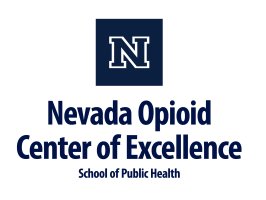Opioid Use Disorder (OUD) is a medical condition characterized by a problematic pattern of opioid use that leads to significant impairment or distress. Opioids are a class of drugs that include prescription pain relievers like oxycodone, hydrocodone, morphine, and illegal drugs like heroin.
Individuals with OUD often exhibit symptoms such as:
- Strong cravings for opioids.
- Difficulty controlling opioid use.
- Continued use of opioids despite negative consequences, such as health problems or relationship issues.
- Tolerance, meaning they need higher doses of opioids to achieve the desired effects.
- Withdrawal symptoms when not using opioids.
Opioid Use Disorder can have severe consequences, including overdose and death. Treatment typically involves a combination of medication (such as methadone, buprenorphine, or naltrexone) and behavioral therapies to help individuals manage cravings, avoid relapse, and address underlying issues contributing to their substance use.
Websites
SAMHSA’s National Helpline
SAMHSA's National Helpline is a free, confidential, 24/7, 365-day-a-year treatment referral and information service (in English and Spanish). Call 1-800-662-HELP (4357) or visit the website.
Get the Facts on Opioid Use Disorder
Opioids are a class of drugs that include prescription pain relievers, synthetic opioids and heroin. These natural or synthetic chemicals interact with opioid receptors on the nerve cells in the body and brain and reduce feelings of pain.
Johns Hopkins Medicine
This website contains Opioid Use Disorder information provided by Johns Hopkins Medicine.
Good Samaritan Drug Overdose Act of 2015
The Good Samaritan Drug Overdose Act of 2015 (Senate Bill 459, Chapter 26, Statutes of Nevada 2015 NRS 453C.120) created various provisions addressing the opiate overdose epidemic that continues to claim over 300 lives per year in Nevada. The law prevents punitive actions against health professionals and any person who administers naloxone or calls 911 to assist someone who may be overdosing on opiates. It also provides immunity to persons seeking medical treatment for an opioid overdose for themselves or someone else. Learn more about the Good Samaritan Law.
American Psychiatric Association
This website includes opioid use disorder information and resources for patients and families from the American Psychiatric Association (APA).
Tools & Resources
Medications for Addiction Treatment (MAT) Resource Library
The MAT Resource Library is supported by the Los Angeles County Health Agency and Department of Public Health, Substance Abuse Prevention and Control. The site provides practical information on Medications for Addiction Treatment (MAT) for providers across health systems (e.g., physical health, mental health, and substance use disorder systems), as well as for patients.
The Opioid Guide: A Resource Guide for Practicing Psychologists
A guide from the American Psychological Society with information for practicing psychologists on opioids, their use, and effective treatments.
Wound Care & Medical Triage for People Who Use Drugs and the Programs That Serve Them
This comprehensive guide provides information and recommendations regarding general health, safer use practices, common viral, fungal, parasitic, and other injection-related infections, overdose and overamp, tapering, withdrawal, medications for opioid use disorder, and seeking medical care.
Screening Tools
Never Use Alone
Toll-free national overdose prevention, detection, life-saving crisis response and medical intervention services for people who use drugs while alone. Never Use Alone’s peer operators are available 24-hours a day, 7 days a week, 365 days a year.
Medication for Opioid Use Disorder (MOUD) Tool Kit for Peer Recovery Specialists
This toolkit is a resource for Peer Recovery Specialists (PRSs) to feel equipped to discuss MOUD with providers, people seeking recovery, and others with questions about this treatment option.
Publications
Fast Facts About Substance Use Disorders: What Every Nurse, APRN, and PA Needs to Know (Book)
This resource is the first to provide evidence-based information and strategies for APRNs and PAs who work with individuals with substance use disorders (SUDs). Written in a concise, bulleted style for easy access to critical information, the reference addresses often-undiagnosed medical and psychiatric conditions which may accompany SUDs and the ethical considerations of working with affected patients and families.
Opioid Use and Opioid Use Disorder in Pregnancy: A Joint Opinion of the ACOG’s Committee on Obstetric Practice and ASAM
The Society of Maternal–Fetal Medicine endorses this document. This Committee Opinion was developed by the American College of Obstetricians and Gynecologists’ Committee on Obstetric Practice in collaboration with committee members Maria A. Mascola, MD, MPH; Ann E. Borders, MD, MSc, MPH; and the American Society of Addiction Medicine member Mishka Terplan, MD, MPH.
Opioid Use Disorder
This activity focuses on the critical evaluation and management of opioid use disorder (OUD), a pervasive condition significantly diminishing patients' quality of life and contributing to a widespread epidemic in the United States.
Evidence-Based Strategies for Preventing Opioid Overdose: What’s Working in the United States
There are strategies that can assist community leaders, local and regional organizers, non-profit groups, law enforcement, public health, and members of the public in understanding and navigating effective ways to prevent opioid overdose in their communities. Use this information as a reference for evidence-based practices that have been successfully implemented in the U.S.
Heroin, Fentanyl, & Other Opioids: A Comprehensive Resource for Families with a Teen or Young Adult Struggling with Opioid Use
Fueled by drugs like heroin, fentanyl and the misuse of prescription pain pills, the opioid epidemic in our country has impacted countless families. To help address this, the Partnership for Drug-Free Kids created a new eBook — Heroin, Fentanyl & Other Opioids: A Comprehensive Resource for Families with a Teen or Young Adult Struggling with Opioid Use. Parents and families need to be prepared with the knowledge and skills to identify opioids, spot early use and take action effectively.
Posters & Infographics
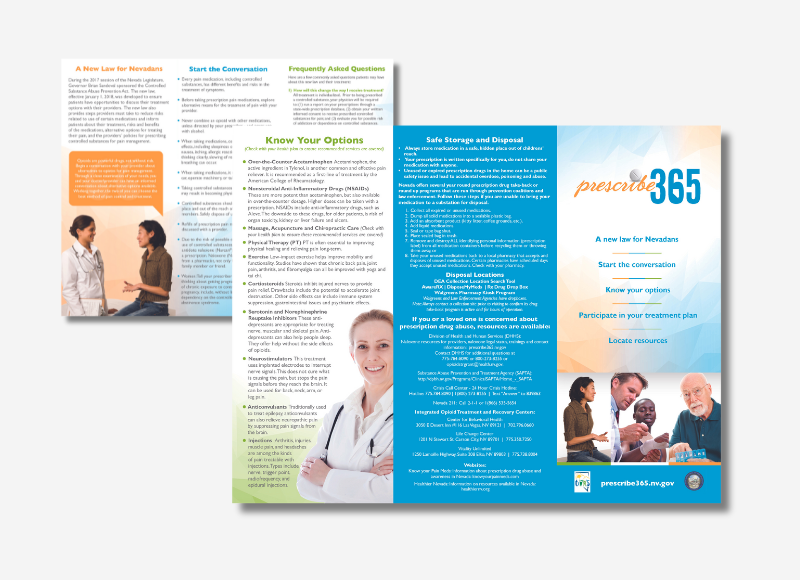
Prescribe 365 Brochure
This brochure is for providers to print and display in their offices encouraging patients to openly discuss safe use of opioids.
Download Brochure
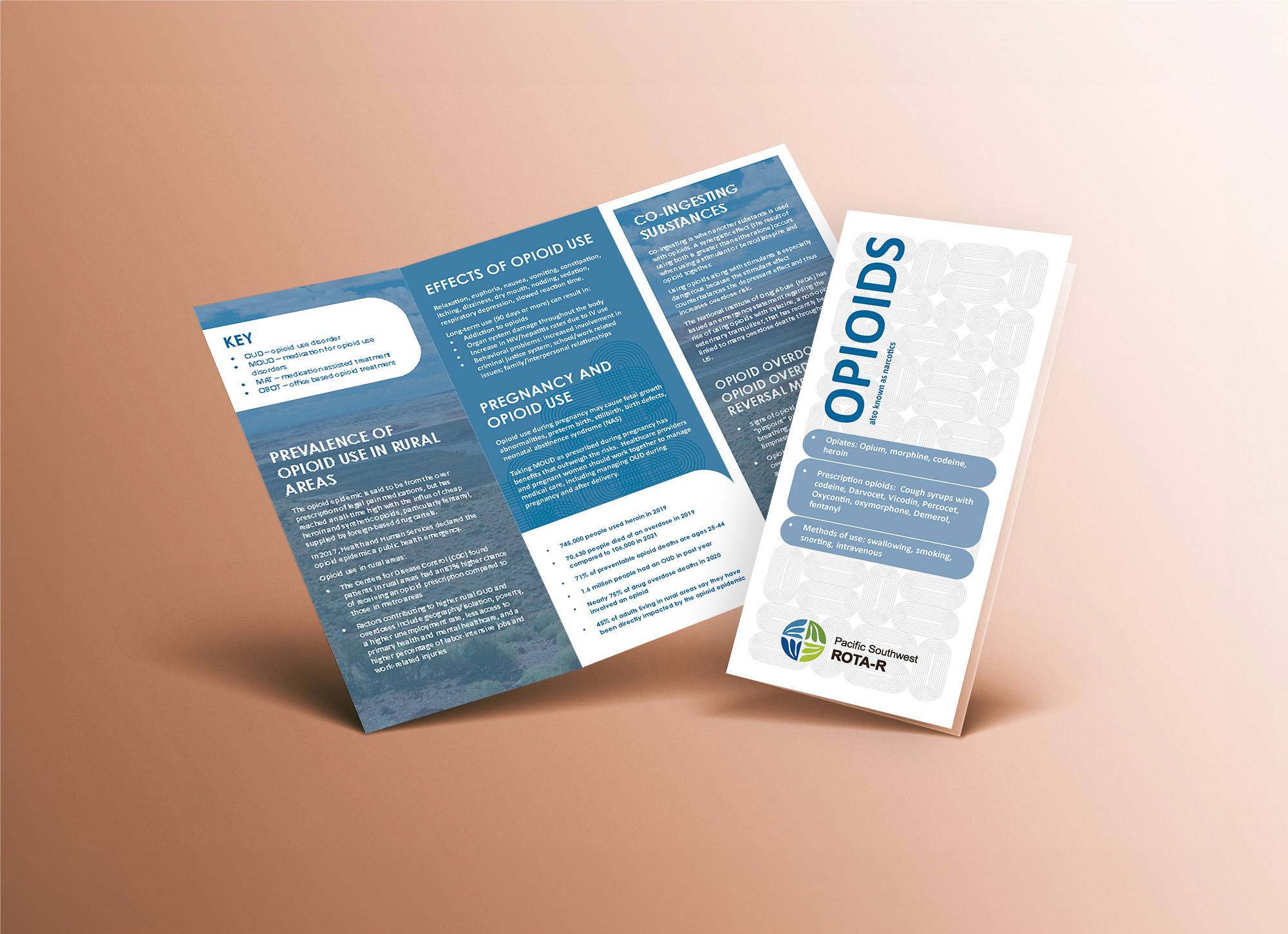
Opioid Trifold Brochures
Opioid Information Brochures for Providers or Consumers help educate on opioids and opioid use, including effects of opioid use, pregnancy and opioid use, medications for opioid use including opioid overdose reversal medications, and treatment options for persons using opioids.
Download or request free hard copies
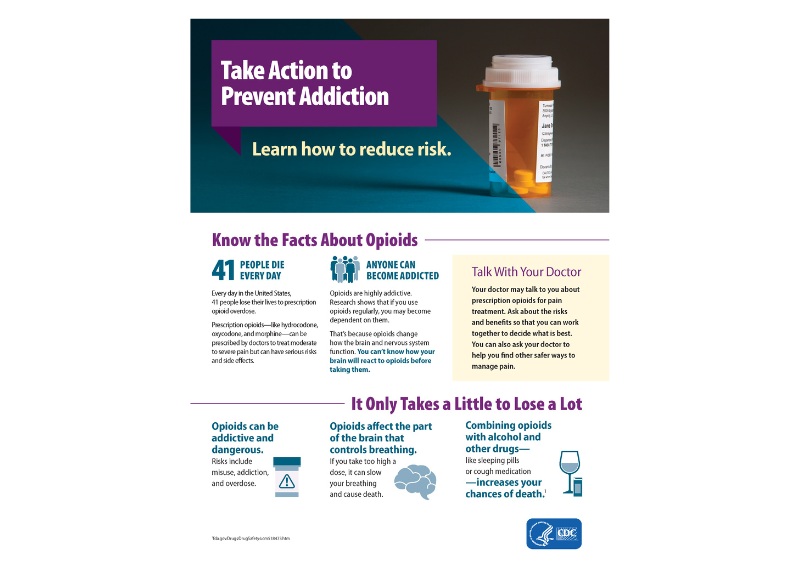
Prevent Addiction Fact Sheet
This face sheet contains information for patients about preventing opioid addiction.
Download the fact sheet.
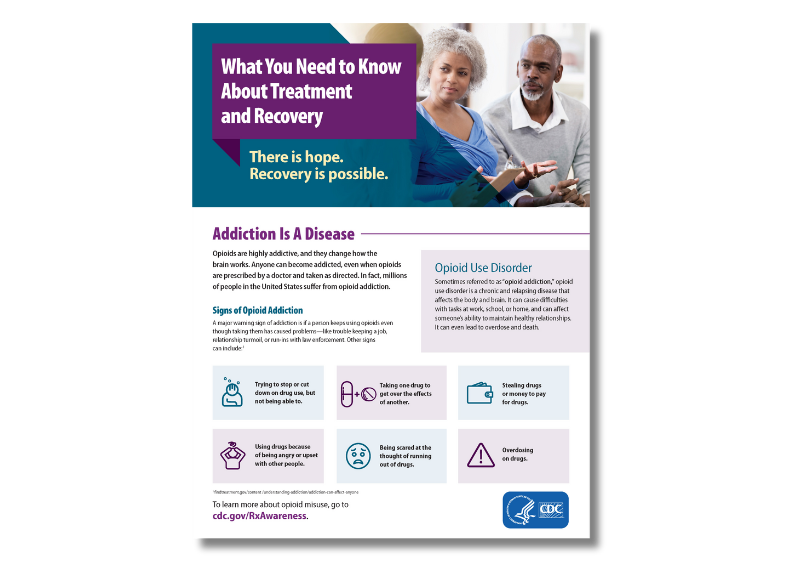
Opioid Use Disorder Treatment and Recovery Fact Sheet
This fact sheet contains important information about treatment and recovery of opioid use disorder for patients, families and friends.
Download the fact sheet
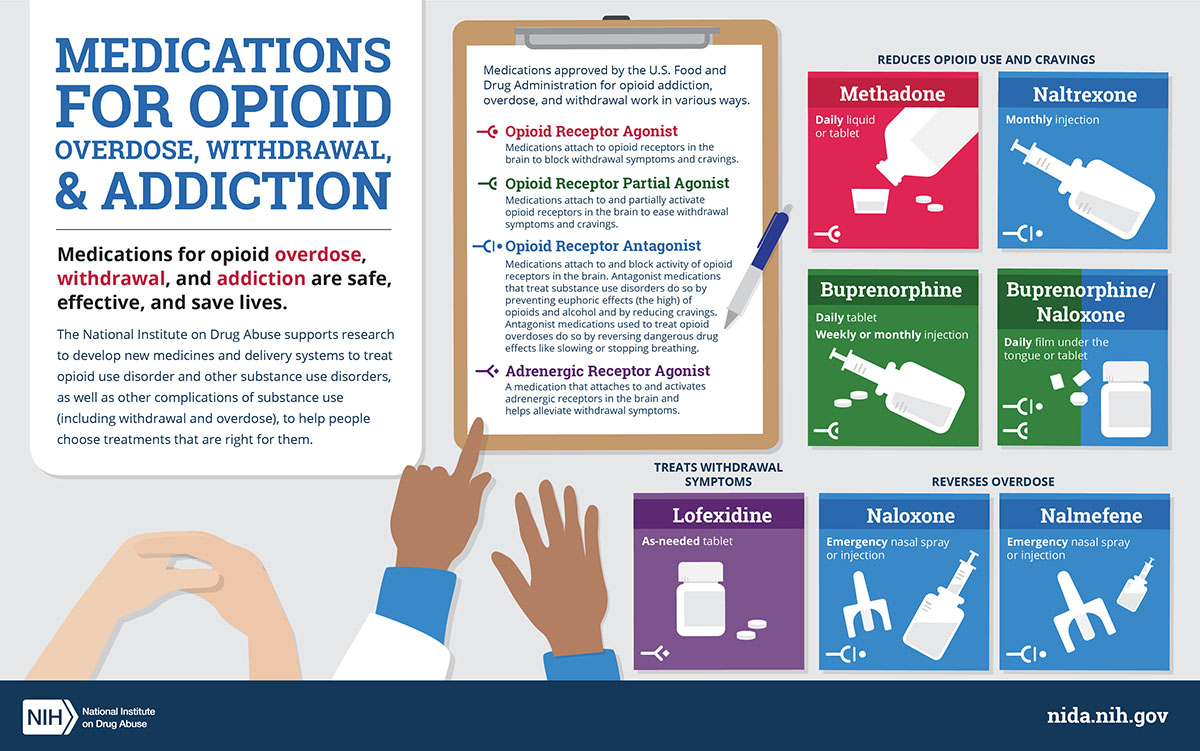
Medications for Opioid Use Disorder (MOUD) Infographic
This infographic shows different types of medications approved by the U.S. Food and Drug Administration for opioid overdose, withdrawal, and addiction.
Download the infographic
Webinars & Online Learning
Current News & Research
Project AMPED
This is a multi-year, mixed methods study in Nevada and New Mexico is examining the patterns, reasons for, and health concerns related to methamphetamine use and opioid use.
Opioid Use Disorder Assessment Tools and Drug Screening
Opioid use disorder risk assessment tools cannot be used in isolation. In combination with standardized clinical examination, and, when indicated, urine drug screening, a validated risk assessment tool, improves the ability to detect opioid misuse. Even though no single tool has been shown to have both high interobserver reliability and high sensitivity, the standardized approach has still been shown to be superior to subjective care giver assessment. This article will provide a global approach to risk assessment in addition to reviewing the available tools.
The Opioid Epidemic’s Toll on Children
This article from the Johns Hopkins Bloomberg School of Public Health discusses the opioid epidemics toll on children.
The Mobile Emergency Recovery Intervention Trial (MERIT)
The Mobile Emergency Recovery Intervention Trial (MERIT) is a grant-funded research study that is evaluating the effectiveness and long-term outcomes of an ER-based intervention for opioid overdose patients treated in Nevada’s Emergency Departments (EDs). The research is currently ongoing.
